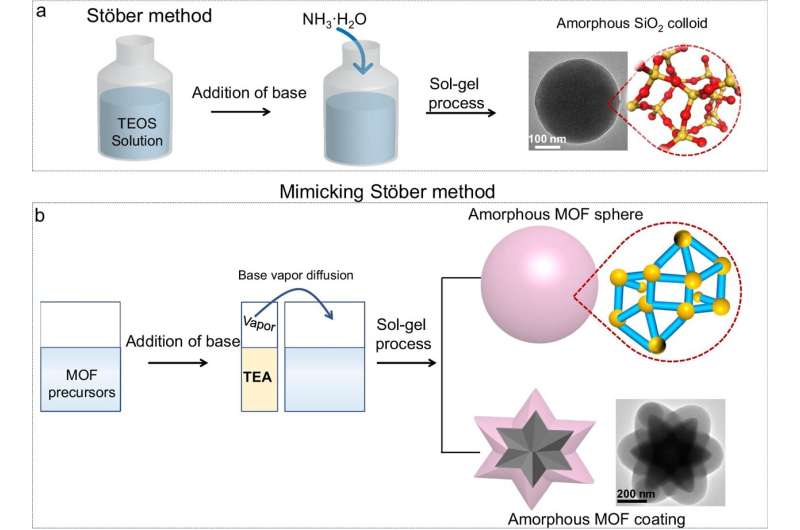
Researchers at Humboldt-Universität zu Berlin, led by Prof. Dr. Nicola Pinna, have made an advancement in nanotechnology, successfully extending the well-known Stöber method to synthesize amorphous metal-organic frameworks (MOFs) and coordination polymers (CPs).
This innovative approach is set to significantly enhance the functionality and complexity of colloidal materials, paving the way for new applications in technology and medicine. The results are published in Nature Communications.
The Stöber method, traditionally used for creating amorphous glass-like colloids, has been a cornerstone in material science. However, its application has been limited to a narrow range of material systems. The HU research team has now broadened this method’s scope to include MOFs and CPs, utilizing a base-vapor diffusion technique to control growth kinetics. This novel synthesis route results in uniform and well-defined MOF and CP spheres.
The research team successfully synthesized 24 different amorphous CP colloids by selecting 12 metal ions and 17 organic ligands. They also developed a way to coat tiny nanoparticles with these materials, forming core-shell structures. This approach allowed them to produce over 100 different combinations of coated particles, each with unique properties and potential uses.
“This development represents a significant enrichment of the Stöber method and introduces a robust platform for the systematic design of colloids with varying levels of functionality and complexity,” explained Prof. Dr. Nicola Pinna, the lead corresponding author. “Our method allows for the controlled synthesis of amorphous MOFs on any substrate, regardless of its surface chemistry, structure, or morphology.”
The team’s innovative approach not only broadens the applicability of the Stöber method but also opens new pathways for the development of advanced materials. These materials hold potential for a wide range of applications, including catalysis, drug delivery, and energy storage.
More information:
Wei Zhang et al, Stöber method to amorphous metal-organic frameworks and coordination polymers, Nature Communications (2024). DOI: 10.1038/s41467-024-49772-2
Provided by
Humboldt-Universität zu Berlin
Citation:
New method to synthesize amorphous metal-organic frameworks and coordination polymers (2024, July 11)
retrieved 11 July 2024
from https://phys.org/news/2024-07-method-amorphous-metal-frameworks-polymers.html
This document is subject to copyright. Apart from any fair dealing for the purpose of private study or research, no
part may be reproduced without the written permission. The content is provided for information purposes only.







